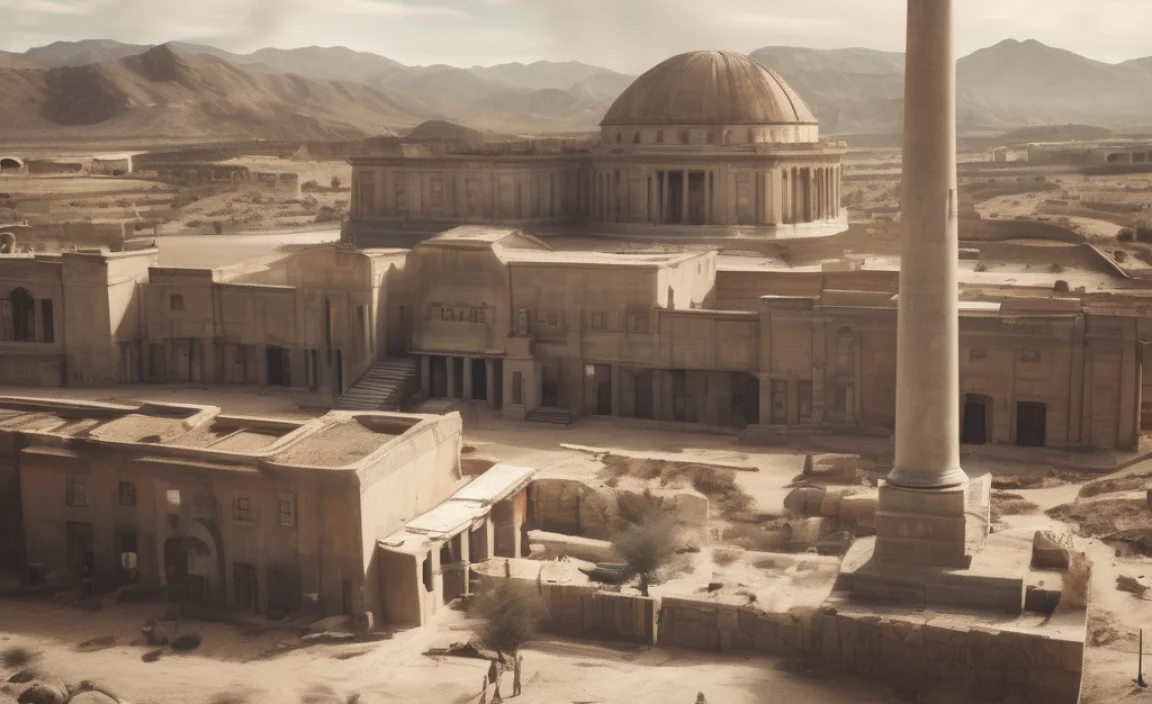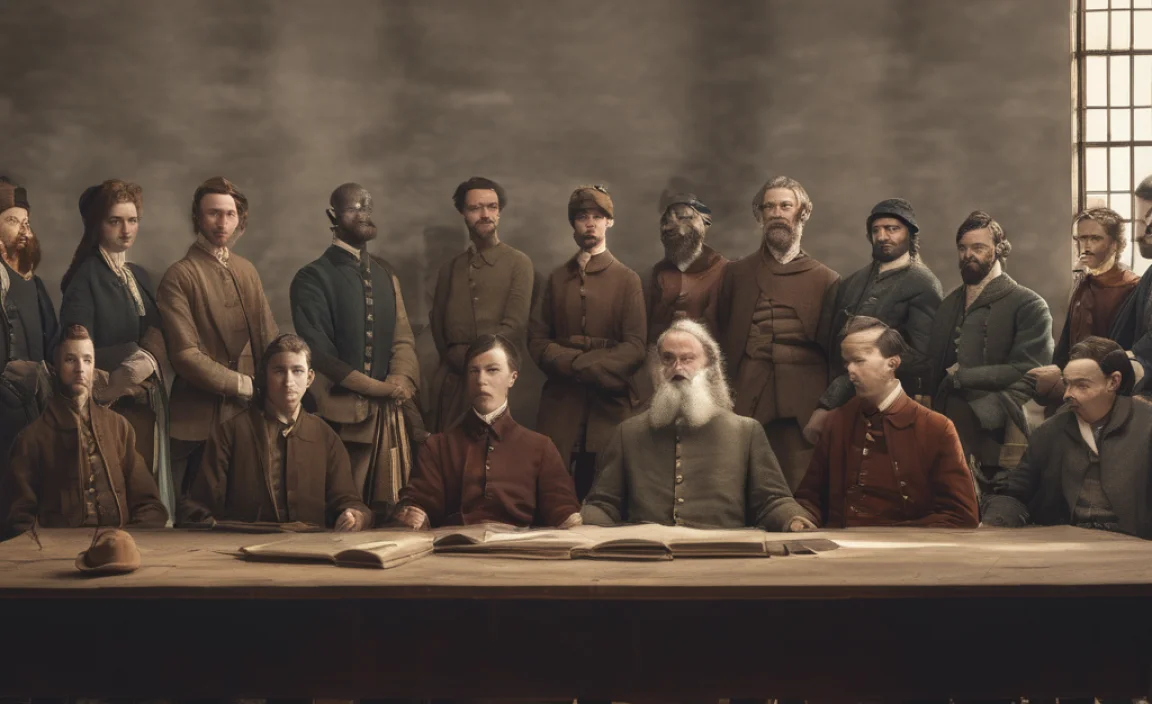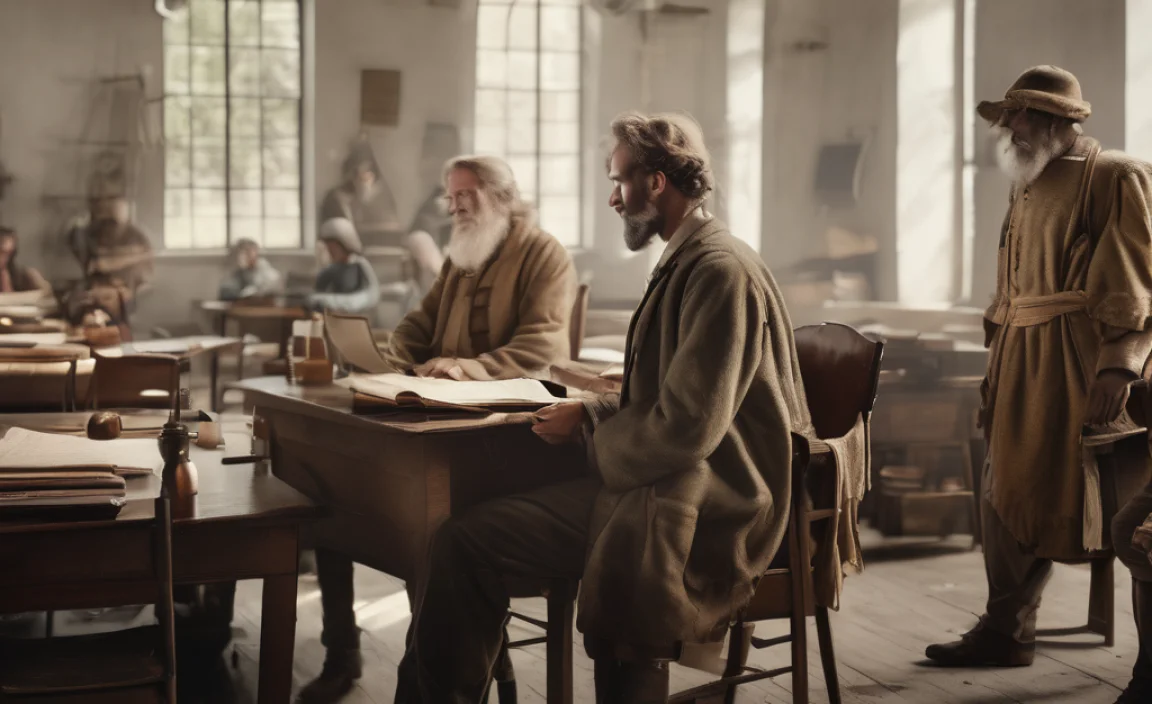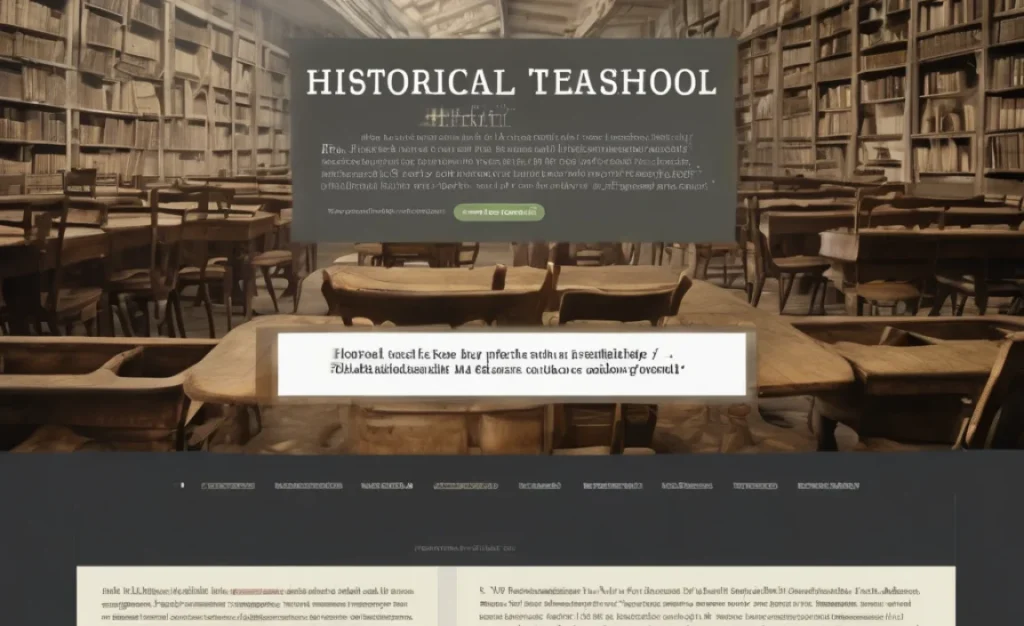Did you know there are many historical facts they don’t teach in school? History books often skip over fascinating details. These hidden stories can be exciting and surprising! Let’s dive into some of these lesser-known events in history. You might just find a new favorite historical figure or event!
Key Takeaways
- Many interesting facts are not included in school history books.
- People have achieved amazing feats throughout history.
- Uncovering hidden stories makes learning history fun and engaging.
- Exploring these facts can spark new interests in history.
- Historical facts they don’t teach in school hold many surprises.
Ancient Civilizations You Never Knew

When we think of ancient civilizations, we often think of the Egyptians or Romans. But did you know there are many other fascinating cultures that existed? The Hittites, for example, were a powerful group in what is now Turkey. They were skilled warriors and builders. Their society thrived around 1600 BC. They even battled the Egyptians! Another lesser-known civilization is the Indus Valley people. They lived in what is now Pakistan and India over 4,000 years ago. They had advanced cities with indoor plumbing and trade systems. These historical facts they don’t teach in school show us just how diverse ancient history really is.
- Hittites had their own writing system.
- Indus Valley cities were very advanced.
- The Hittites used iron tools.
- Trade was crucial in the Indus Valley.
- Both civilizations had unique cultures.
Learning about these ancient people can spark curiosity in young students. Why do we only hear about certain cultures? Could there be more civilizations we haven’t discovered? These hidden stories can make history come alive. It shows us that the world was a big and busy place even thousands of years ago.
Fun Fact or Stats : The Hittites were the first to use iron, changing warfare forever!
The Hittites: Masters of Iron
The Hittites were one of the first groups to use iron. Their iron tools and weapons gave them a huge advantage. Why was iron so important? It was stronger and more durable than bronze. This meant their weapons lasted longer and were more effective in battles. The Hittites’ mastery of iron helped them conquer their neighbors. It also made them a feared military power. Imagine being the first to discover such a powerful material! Wouldn’t you feel like a superhero with your new tools?
Indus Valley’s Plumbing Genius
Imagine living over 4,000 years ago with no indoor plumbing. Sounds tough, right? But the Indus Valley people had a solution. They designed complex systems to bring water into their homes. Their cities had advanced drainage systems. This kept their streets clean and healthy. Having such systems then was rare. It shows how clever and innovative they were. These systems show us the importance of cleanliness and planning. Wouldn’t it be exciting to see how they built such systems without modern machinery?
Trade in Unknown Lands
Trade was a big part of life in the Indus Valley. These people traded goods with distant lands. They swapped items like beads, shells, and metals. This shows they had strong relationships with other cultures. Why was trade so important? It brought them new materials and ideas. These exchanges made them prosperous. Picture the excitement of opening a crate from a faraway place! What treasures might it hold? These activities show us how connected ancient people were.
Historical Women Who Made An Impact

History often highlights men, but women have made significant contributions too. Do you know about Hatshepsut? She was a powerful female pharaoh in ancient Egypt. She dressed as a man to gain respect. Her reign was full of peace and prosperity. How about Boudica, the warrior queen of the Iceni tribe? She led a rebellion against the Romans in Britain. The story of these women are historical facts they don’t teach in school, but they are truly inspiring. Learning about their bravery and leadership can change how we see history.
- Hatshepsut expanded trade routes.
- Boudica fought for her people’s freedom.
- Women ruled in different parts of the world.
- They used clever strategies to lead.
- Both women faced great challenges.
Recognizing these women’s achievements can empower young girls today. Why do we often overlook their stories? What can we learn from them? Their courage and intelligence broke barriers. They showed that leadership knows no gender. Discovering these stories helps us appreciate women’s roles throughout history.
Fun Fact or Stats : Hatshepsut built magnificent temples still standing today!
Hatshepsut: Egypt’s Queen Pharaoh
Hatshepsut was one of the most remarkable rulers of ancient Egypt. She took the throne around 1479 BC. Unlike many rulers, she focused on building and trade. Her reign was peaceful and prosperous. Why did she wear men’s clothes? She did it to gain respect and authority. People accepted her as a pharaoh. Her achievements show us that women can break norms and lead with success. Could you imagine ruling a vast empire like hers?
Boudica’s Fierce Rebellion
Boudica was a queen who fought the Romans in Britain. She led her tribe with great courage. Why was she so fierce? Her people suffered under Roman rule. She wanted freedom for her tribe. Her leadership inspired many to join her cause. Though she faced a mighty enemy, she stood strong. Her story shows us the power of determination. How would you feel leading an army into battle for freedom?
Women Rulers Around the World
Throughout history, there have been many powerful female leaders. Some ruled vast empires, while others led small tribes. These women faced and overcame many challenges. Why don’t we hear more about them? Their stories are often hidden in history books. Yet, they are just as important. Imagine discovering a queen who ruled a distant land. What stories would she tell? These women show us that leadership comes from strength, not gender.
Technological Marvels from the Past

Think technology is a modern thing? Think again! Ancient civilizations created amazing inventions. The Antikythera mechanism is one example. It’s an ancient Greek device used to predict astronomical events. It was like a computer but made of gears. Another marvel is the Baghdad Battery. It’s a clay jar that some believe could produce electricity. These are historical facts they don’t teach in school, yet they show human creativity has no limits.
- Antikythera mechanism was found in a shipwreck.
- Baghdad Battery’s purpose is still debated.
- Ancient tech was often ahead of its time.
- Innovations led to new discoveries.
- Many ancient inventions remain a mystery.
These technological wonders show us that humans have always been inventors. Why do we often think of ancient people as primitive? These inventions prove they were anything but. Exploring these marvels can inspire young minds today. They teach us to think outside the box and never stop questioning. What other ancient technologies might be waiting to be discovered?
Fun Fact or Stats : The Antikythera mechanism dates back to between 150 and 100 BC!
The Mystery of the Antikythera Mechanism
The Antikythera mechanism is a mysterious device from ancient Greece. It was discovered in a shipwreck in 1901. What makes it so special? It could predict astronomical events like eclipses. Imagine having a machine that tracks the stars! Scientists still study it today to understand its secrets. This invention shows us how advanced ancient science was. Wouldn’t it be amazing to see how it worked back then?
The Enigma of the Baghdad Battery
The Baghdad Battery is another ancient wonder. It’s a clay jar discovered near Baghdad. Experts believe it might have been used to produce electricity. How could ancient people have made electricity? That’s the mystery! Some think it was used for electroplating. Others believe it had religious purposes. This shows us that ancient people were curious and inventive. What other secrets might this battery hold?
Ancient Inventions Beyond Their Time
Many ancient inventions were ahead of their time. From the first calendars to intricate machinery, our ancestors were inventors. Why don’t we learn more about these in school? Their creativity shaped our world today. These inventions teach us to appreciate human ingenuity. Imagine discovering a new invention that changes everything! Ancient tech reminds us that curiosity leads to incredible discoveries.
Explorers Who Changed the World

Exploring new lands was a risky adventure. Yet, many explorers took on the challenge. Have you heard of Zheng He? He was a Chinese admiral who sailed vast oceans before Columbus. His fleet was huge, with over 300 ships! Another remarkable explorer was Ibn Battuta. He traveled more than 75,000 miles across Africa, Asia, and Europe. These explorers’ journeys are historical facts they don’t teach in school. Their adventures changed the world and connected different cultures.
- Zheng He’s voyages expanded Chinese influence.
- Ibn Battuta recorded his travels in a famous book.
- Both explorers faced many challenges.
- Their journeys connected diverse cultures.
- Exploration was key to world history.
Why do we only hear about certain explorers? These hidden stories remind us that exploration was a global activity. They show us bravery and curiosity in action. Learning about them can inspire young adventurers today. Would you dare to sail into the unknown like Zheng He? Or travel across continents like Ibn Battuta? These explorers teach us that the world is full of wonders waiting to be discovered.
Fun Fact or Stats : Zheng He’s largest ship was over 400 feet long!
Zheng He’s Ocean Adventures
Zheng He was a legendary Chinese admiral. He led seven great voyages across the seas. His fleet was massive, with more than 300 ships. Why did he explore? His missions aimed to spread Chinese culture and trade. His journeys took him to many lands, including Africa and India. Zheng He’s story shows us the power of exploration. Could you imagine leading such a huge expedition?
Ibn Battuta’s Epic Journeys
Ibn Battuta was a Moroccan explorer who traveled far and wide. He journeyed for nearly 30 years across Africa, Asia, and Europe. Why did he travel so much? He wanted to learn about different cultures. His travels were full of adventure and challenges. He wrote about his experiences, leaving us a detailed account of the world in the 14th century. His story shows us the importance of understanding and respecting other cultures. Would you enjoy such epic journeys?
Connecting Cultures Through Exploration
Explorers like Zheng He and Ibn Battuta connected distant lands and cultures. Their journeys helped spread ideas, goods, and knowledge. Why is this important? It made the world a more connected place. Their stories remind us that exploration is about curiosity and learning. Wouldn’t it be exciting to discover new places and meet new people? These explorers show us the value of being open to the world.
| Explorer | Origin | Main Achievements | Distance Traveled |
|---|---|---|---|
| Zheng He | China | Led seven voyages | Over 30,000 miles |
| Ibn Battuta | Morocco | Traveled across three continents | More than 75,000 miles |
Conclusion
History is full of amazing stories and facts. Many of these are historical facts they don’t teach in school. Discovering them can be exciting and fun. They show us the diversity and richness of our past. By exploring these hidden tales, we learn more about the world and ourselves. History is not just about dates and events. It’s about the people and their incredible stories that shaped the world.
FAQs
Question: Why don’t we learn about these historical facts in school?
Answer: School curriculums focus on major events and figures. This means some stories and facts get left out. However, historical facts they don’t teach in school are still important. They help us understand history better by giving us a broader perspective.
Question: Who was Hatshepsut, and why was she important?
Answer: Hatshepsut was a female pharaoh of Egypt. She ruled around 1479 BC. During her reign, Egypt experienced peace and prosperity. She is important because she showed that women could lead successfully. Her story is one of the many historical facts they don’t teach in school.
Question: What was the Indus Valley civilization known for?
Answer: The Indus Valley civilization was known for its advanced cities. They had indoor plumbing and well-planned streets. These achievements show their ingenuity and planning skills. Unfortunately, this civilization is one of the historical facts they don’t teach in school.
Question: How did the Hittites change warfare?
Answer: The Hittites were among the first to use iron weapons. This gave them an advantage over other civilizations using bronze. Iron was stronger and lasted longer. This innovation changed the way wars were fought. It’s a significant historical fact that shows ancient people’s inventiveness.
Question: Who was Ibn Battuta, and what did he do?
Answer: Ibn Battuta was a Moroccan explorer. He traveled more than 75,000 miles across Africa, Asia, and Europe. His journeys helped connect different cultures. He recorded his adventures in a famous book. His story is one of the many inspiring historical facts they don’t teach in school.
Question: What is the Antikythera mechanism?
Answer: The Antikythera mechanism is an ancient Greek device. It was used to predict astronomical events like eclipses. Discovered in a shipwreck, it still puzzles scientists today. It’s an example of ancient technology that shows the Greeks’ advanced knowledge. This device is a fascinating historical fact that we often don’t learn about in school.











